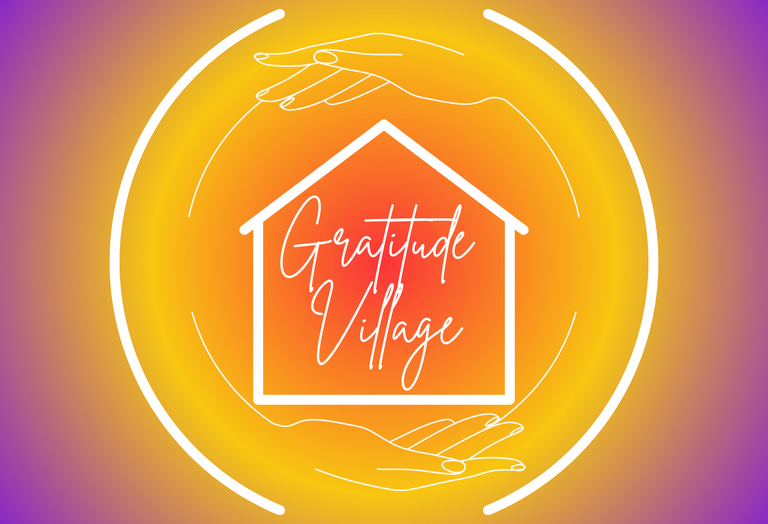Join our next In Person Info Session December 16 from 11am-1pm MST
The Shift to “We”: Adapting from Individualism to Cooperation
Moving into cohousing means more than changing your address—it means shifting from an individualistic lifestyle to a cooperative one. In this blog, we explore the culture shock of moving from “me” to “we,” and how residents adapt to shared meals, group decision-making, collaborative work, and community life. Learn how cohousing fosters interdependence, strengthens relationships, and creates a deeper sense of belonging without sacrificing individuality.
Gratitude Village
10/5/20254 min read


For many of us raised in modern society, independence is the ultimate marker of success. We’re taught that to “make it” means owning your own home, closing your front door at the end of the day, and handling life’s challenges on your own. This culture of individualism runs deep in the United States, where self-reliance is celebrated and asking for help is sometimes seen as weakness. Moving into cohousing, however, invites a very different mindset. It asks us to shift from “me” to “we,” from independence at all costs to interdependence that enriches everyone’s lives.
At first, this can feel like culture shock. Imagine arriving in a neighborhood where neighbors not only wave as you pass by but also ask if you’ll join them for dinner three nights a week. Or where decisions about landscaping, community policies and even play spaces for children aren’t made by a single homeowner but by the group, together. For someone used to calling all the shots within their four walls, this adjustment can be both liberating and uncomfortable. The transition is not always smooth but it is transformative.
The initial challenges often come down to expectations. New residents might feel unsure about what level of participation is “required.” Do they have to attend every common meal? Are they obligated to serve on committees? In reality, healthy cohousing communities balance collective responsibility with personal choice. Yes, there is a stronger emphasis on showing up and contributing, but it’s not about perfection. It’s about cultivating a rhythm where everyone’s unique contributions and passions add up to something greater than the sum of its parts.
One of the first shifts new residents notice is how much shared meals change the daily experience of living. Instead of rushing home to cook in isolation, families often take turns preparing food for the community. This simple act can be daunting for someone used to cooking only for themselves, but soon it becomes second nature. The reward is not just efficiency but also connection: the laughter of children as they help set tables, the chance to try new recipes, the joy of arriving at the end of a long day and finding a warm meal waiting. Over time, these meals become less about logistics and more about belonging.
Decision-making is another area where the “we” takes center stage. In individualistic culture, property owners often think only of their own lot lines. In cohousing, the group decides together how to design shared spaces, allocate budgets, and address challenges. Tools like sociocracy help structure these conversations so every voice is heard, even when opinions differ. At first, this can feel slow or overly detailed. But as residents adapt, they discover that decisions made together are stronger, fairer, and more deeply supported than those made in isolation. The very act of learning to listen to others—and to compromise—becomes a skill that ripples into all areas of life.
Of course, the shift from “me” to “we” doesn’t mean losing yourself. One of the common misconceptions about cohousing is that it erases individuality. In reality, the opposite happens. Because privacy and personal space are respected, residents often feel freer to share their authentic selves in community settings. You don’t have to put on a polished face for your neighbors; you can bring your real joys, struggles and quirks. The result is not conformity but a deeper sense of acceptance—knowing that you belong just as you are, while also belonging to something bigger than yourself.
Adaptation also comes through the daily rhythms of shared work. Whether it’s tending gardens, maintaining the common house, or organizing events, everyone lends a hand. At first, this might feel like “extra chores.” But soon residents realize that tasks completed together are faster, lighter, and more fun. Painting a fence alone might take hours; painting it with your neighbors turns into a morning of laughter, conversation, and accomplishment. These shared efforts cultivate pride in the community and reinforce the understanding that cooperation is not a burden but a gift.
The cultural adjustment extends to children as well. In an individualistic setting, parents often shoulder the full weight of caregiving, juggling work, meals, school runs, and playdates. In a cohousing community, that load is shared. Kids grow up surrounded by multiple caring adults, while parents gain breathing room knowing their children are safe and engaged. At first, it can be an adjustment to trust others with your kids or to allow your children more freedom in shared spaces. But soon, families realize that this web of interdependence is precisely what many modern parents have been longing for: a village.
As residents embrace the “we,” they also discover that conflict is part of the journey. Differing opinions, clashing styles, or disagreements about resources are inevitable. But instead of being destructive, these moments become opportunities for growth. Communities that thrive don’t avoid conflict—they lean into it, equipped with communication tools and a shared commitment to resolution. For those used to walking away at the first sign of tension, this can feel uncomfortable. Yet, over time, many find that facing conflict directly builds stronger trust and deeper relationships than avoiding it ever could.
Perhaps the greatest surprise for new cohousers is how the shift to “we” ultimately enhances the quality of life. Far from losing autonomy, residents find themselves gaining time, joy, and resilience. Shared childcare means more freedom for parents. Shared meals mean less stress about dinner. Shared decision-making means fewer regrets about choices made in isolation. And the simple act of walking into the common house, where people know your name and care about your day, adds a sense of safety and warmth that no single-family home could provide.
At Gratitude Village, we know the transition from individualism to cooperation takes time. It requires patience, humility, and a willingness to learn new ways of living. But we also know that on the other side of that adjustment is something extraordinary: a community where people not only live next to each other but live with each other. In a world that often feels divided and isolating, that shift to “we” is not just an adjustment—it’s a profound gift.
COMMUNITY
Join us in embracing nature, diversity and connection.
Sustainability
DIVERSITY
info@gratitudevillageco.com
720-689-4821
© 2025. All rights reserved.
AFFORDABILITY
Gratitude Village Inc. is a 501(c)3 charitable corporation that values diversity, equity, and inclusion as essential to our mission
Subscribe to our Substack
Refund Policy




Gratitude Village is a Proud Member of these organizations
